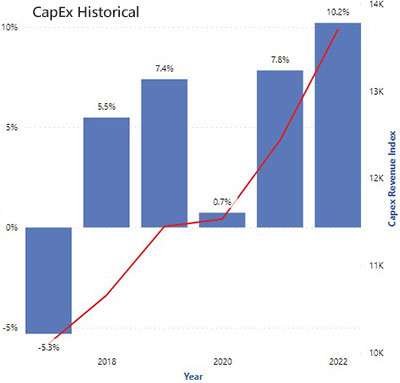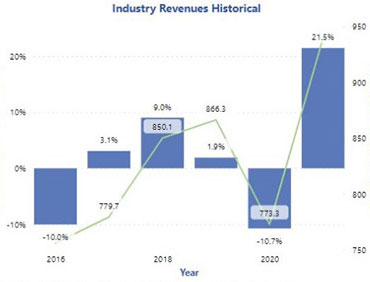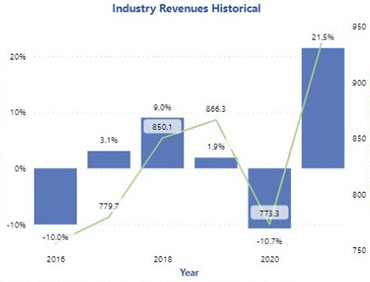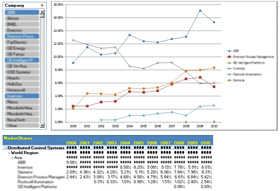Global Trade Compliance Market Grows by Double Digit Rates the Second Year in a Row
ARC Advisory Group’s research of the Global Trade Compliance (GTC) market reveals that it has grown by double digit rates for the second year in a row despite the fact that there is no standard user for this type of software and consequently there is no common understanding of what the end-to-end global trade compliance process should be. Sometimes the trade function rolls up to the supply chain function to support agility in cross border movements. Sometimes, it rolls up to legal for companies who want to be sure they are compliant with global regulations. And increasingly we are seeing industry specific solutions. Further, no GTC provider can provide compliance to all trade regulations across all nations which leads to many small domestic suppliers of these solutions.
"The complexities of complying are significant. In truth, properly classifying products for trade purposes can be difficult. The problem is that there is an incredible gap between how products are described commercially by trade and how they are expressed in the national customs tariff schedules. This has resulted in error rates of up to 30 percent. Even government experts frequently disagree on what the classification of a particular product should be," according to Steve Banker, Vice President of Supply Chain Management and key author of ARC's Global Trade Compliance Systems Market Research.
Global Trade Compliance Market Trends
In addition to providing detailed competitive market share data, the report also addresses key market trends as follows:
- AI and Machine Learning Ease Trade Classification
- Global Trade Compliance Is Increasingly Viewed as Strategic
- Global Trade Compliance Supports Efficient Sourcing
- Trade Conflict Drives the Need for GTC
Leading Suppliers to the Global Trade Compliance Systems Market Identified
In addition to providing specific market data and industry trends, this ARC market research also identifies and positions the leading suppliers to this market and provides and summarizes their relevant offerings. An alphabetical list of key suppliers covered in this analysis includes: AEB, Descartes Systems Group, E2open, MIC, SAP.
About the Global Trade Compliance Systems Research
 The Global Trade Compliance Systems research explores the current and future market performance and related technology and business trends and identifies leading technology suppliers. This new research is based on ARC’s industry-leading market research database, extensive primary and secondary research, and proprietary economic modelling techniques. The research includes competitive analysis, five-year market forecasts, and 5 years of historical analysis. The research segmentation includes Revenue Category, World Region, Industry, Customer Tier.
The Global Trade Compliance Systems research explores the current and future market performance and related technology and business trends and identifies leading technology suppliers. This new research is based on ARC’s industry-leading market research database, extensive primary and secondary research, and proprietary economic modelling techniques. The research includes competitive analysis, five-year market forecasts, and 5 years of historical analysis. The research segmentation includes Revenue Category, World Region, Industry, Customer Tier.
This new research is available in a variety of formats to meet the specific research and budgetary requirements of a wide variety of organizations. These include:
- MIRA Service: An annual subscription service that provides a unique online environment to each customer, together with all the necessary user interface apps and datasets. MIRA unlocks the full benefits of ARC’s time-tested market intelligence by leveraging the latest analytical tools and technologies to allow you to make more actionable, real-time business decisions. Interactive access to ARC’s qualitative analysis is displayed in context with up-to-date market data, allowing clients to develop customized views of the market to best suit their needs.
- Concise Market Analysis Report (PDF): This wide-screen presentation format provides executives, business unit managers, and other users with immediate access to in-depth market analysis, including analysis associated with every market data chart and figure. Included is an executive-level summary of the current market dynamics, five-year market forecast, and competitive analysis, plus an overview of strategic issues. The PDF is available with a comprehensive set of charts with associated analysis.
- Market Intelligence Workbook (Excel Power Pivot, sold with Market Analysis Report PDF): A standard Excel Workbook, including base year market data and a five-year market forecast. This workbook enables licensed users to freely manipulate data, making it easier to analyze the latest data for business intelligence and generate custom reports, including up to five years of historical analysis.
For more information on this and other available ARC market research, please visit our Market Analysis Services section.




